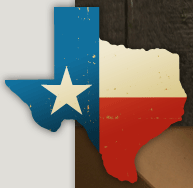Friday, September 21, 2012
Vehicle Emergency – Procedures and Preparedness
Vehicle emergencies aren’t limited to mechanical problems
and since we can’t schedule our emergencies at a more convenient time, every driver
should be prepared by knowing how to deal with emergencies and should keep an
emergency kit in their car at all times.
The first thing to remember when your vehicle is stuck or
disabled is your personal safety. If possible, the vehicle should be removed as
far off the side of the road as possible. A large number of crashes happen when
drivers either don’t see or don’t realize that the car ahead is stopped or
because they look at the disabled vehicle instead of watching the road ahead. Remember
to activate your emergency flashers, then, if you have flares or a reflective
emergency triangle, place them 100 to 200 feet behind the vehicle to give other
drivers warning of a problem up ahead. Also, raise the hood to indicate a need for
help or tie a white cloth or "help" sign to the antennae.
The best defense against a breakdown on the side of the road
is to ensure your vehicle is well maintained and that oil and fluids are
changed or topped off. Most important is to keep the gas tank
full and don’t try to push it to the next exit when your gas is running low.
Check your Tires
Regularly
Worn tires should be replaced. Check your tires by inserting
a penny into the tread; if the top of Abe Lincoln’s head can be seen your tread
is too worn. Check your tire’s pressure; correct tire pressure is printed on
the tire’s side or in the owner’s manual. Make sure that your spare tire is
full and you have an operating jack and lug wrench.
Vehicle Emergency Kits
The best and most important item in your emergency kit
should be a cell phone with a fully charged battery. Make sure you keep a
charger cord in your car and that your battery is full.
Your emergency kit’s contents will depend on where you live
and drive. At a minimum, a basic emergency kit should contain:
- Jumper cables
- Two 30 minute flares
- A reflective triangle
- A “Help” sign or white cloth to tie to the antennae
- A flashlight with extra batteries.
- A small tool kit including:
o
Straight slot and phillips-head screw drivers
o
A small pair of pliers
o
A pair of slip lock or “water pump” pliers
o
A pair of combination needle-nose/wire cutter
pliers
o
A small knife
- Two quarts of oil
- Windshield washer fluid
- A gallon of water
- Thick gloves and rags to protect your hands from hot engine surfaces
- A tire pressure gauge
- Duck tape
- Electrical insulating tape
- An emergency radiator/heater hose repair kit
- An empty plastic gas can
- A small first aid kit with:
o
Bandage rolls
o
Tape
o
Band-Aids©
o
Alcohol swabs
o
A chemical cold compress
o
First aid instruction booklet
- A nylon bag to hold all the contents
For winter driving, your kit should also include:
- Blankets
- Chemical hand warmers
- High energy snack bars to provide calories for warmth
- Sand or cat litter for traction
- Extra clothing
(Run your car just long enough to
heat the interior; you need to conserve gas and be aware of the danger of
carbon monoxide poisoning. Leaving your car and walking for help can have
tragic consequences)
Vehicle
emergency kits are available wherever auto parts are sold and on-line at very
reasonable prices.
For
more information on driving safety, visit our website at: http://www.nationalsafetycommission.com/
Labels: driver safety, tire safety, vehicle emergency, vehicle emergency kit
Posted by DriverSchool
at
7:17 AM


Visit Us
Search
Loading
Categories
Recent Posts
- Best and Worst Cities for Texas Drivers
- Refresh Your Driving Skills
- Teen Drivers and Traffic Tickets
- There is No Such Thing as a Motor Vehicle Accident
- Commonly Missed Warning Road Signs and Single Vehi...
- Graduated Driving License Law Calculator
- Getting your CDL license in Texas can be a Confusi...
- Boating Safety Week
- Driving Records May Contain Errors
- Construction Zone Safety Month






0 Comments:
Post a Comment
Note: Only a member of this blog may post a comment.
Subscribe to Post Comments [Atom]
|<< Home